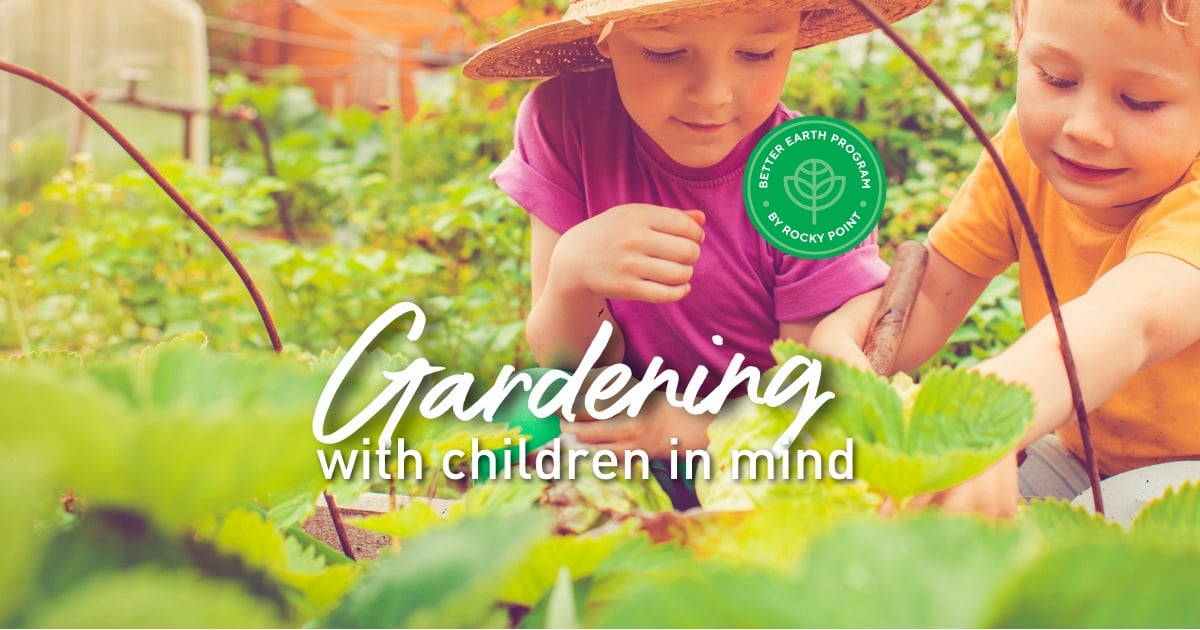Getting children outdoors and interacting with nature and gardening shouldn’t be something that alone is allocated to school holidays and weekends.
The need for outdoor green space play is becoming more and more relevant and needed for our fast-paced lives, and that encompasses children and adults alike.
It has been proven that interacting with and being in natural environments reduces stress and has a calming effect, and children, in particular, have better cognitive function when learning and playing outdoors.
Creating creative educational green spaces for children:
- Exercise & play: careful placement of play equipment such as swings, trampolines (mini for small spaces), slides and cubby houses. You can even create a living cubby by using bamboo stakes to create a tepee that climbing beans or peas can climb up. Use natural materials to create your play environment, such as log rounds for steppingstones, swings hung from mature sturdy trees, pebble pathways, hopscotch on stone areas and more.
- Sensory plants: take time to consider how you can make your garden stimulating for your children by having plants that have scented foliage or flowers. This is a great way to get your children to directly interact with plants. Maybe consider planting a scented secret garden trail to a special destination. Colour of course is a visual stimulation and can be in the form of different foliage types and various flower forms and colours. Plant to have something in flower for every month of the year.
- Eat: knowing where food such as vegetables, fruit, and herbs come from is a crucial part of a child’s education I feel. Making a vegetable garden, herbs pots, fruiting orchard or designing a bushtucker snack track are all ways to engage, teach and give your children a space of their own to dig in the dirt and plant and sow. Provide lightweight tools that are easy to use. Remember to keep it simple.
- Observation: having wild areas that no one can disturb is an ideal way to attract wildlife to your garden. Birdbaths, frog ponds, bug hotels and native plants interspersed with rocks and logs. Here children can learn how to nature journal, observe and learn to identify insects and wildlife species in their very own backyard.
- Space: to just be- like hammocks, patches of lawn to lie and cloud watch, paddling pools, sandpits, appropriately sized furniture where children can sit to eat, draw and read too. A garden can bring mindfulness to those of all ages.
- General garden design considerations: be aware of what plants are poisonous and avoid if you have a curious child that is prone to eating before thinking. Spiky/sharp plants can also be an issue. Keep any gardening equipment, sprays and fertilisers in sealed tubs and sheds out of harm’s way.
These ideas, of course, can totally be taken on board and utilised by the whole family. Anyone of any age can enjoy the above, even the slippery slide.
_MEB.png?width=842&height=596&name=RP_HorizontalColour(R)_MEB.png)



